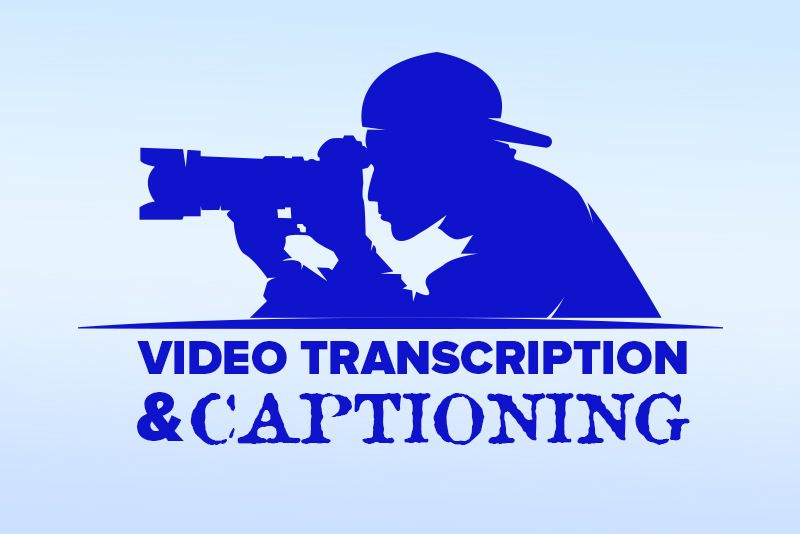After a pandemic-related downturn in 2020, the entertainment and media (E&M) sectors are expected to register robust growth. Media channels use both audio and video for broadcasting. As up to 85 percent of video is viewed on silent mode, one tactic that can make a difference for broadcast media such as television, internet, audio podcasts, and video content is transcription and captioning. In fact, the media industry is increasingly relying on professional transcription services for video transcription and captioning solutions.
PwC’s Global Entertainment & Media Outlook 2022-2026 reported that E&M revenue rose a robust 10.4% in 2021, from US$2.12trn to US$2.34trn. In a competitive scenario, being technologically savvy and using the right strategies is essential for staying ahead of the curve. Captioning involves presenting text on a screen at the same time as the spoken dialogue. Transcription converts speech into written text. There are many reasons why video transcription and captioning are important for the media industry.
Reasons Why Video Transcription and Captioning Are Important for the Media Industry
- Allows people with impaired hearing to interpret media content: This is a fundamental reason for captioning and transcribing videos and television broadcasts. Adding closed captioning or subtilties presents the audio content of a television program as text on the TV screen, making the content accessible to the hearing impaired as well as for people for who speak English as a second language.
- Promotes compliance with regulations: The Federal Communications Federation (FCC) rules for TV closed captioning aim to ensure that individuals who are deaf or hard-of-hearing have full access to news, entertainment and information. Media transcription services can help broadcasters ensure compliance with FCC rules for captions, which include:
- Accurate: Captions must synchronize with the spoken words and convey background noises and other sounds as much as possible.
- Synchronous: Captions must match the corresponding dialogue and sounds to the fullest extent possible and must appear on the screen at a speed that can be read by viewers.
- Complete: Captions must run from the beginning to the end of the program.
- Proper placement: Captions should not block other important visual content on the screen, overlap or run off the edge of the screen.
- Improves comprehension: Viewers can understand media content better when it has captions. There is evidence that placing captions in video improves viewer understanding of the content. According to a report from San Francisco State University, an SF professor found that simply switching on captions made a big difference when students watch educational videos. Grades improved and class discussions also became livelier and more detailed, with students being able to recall specific information shown in the videos such as names of people and places, according to the case study published in the American Indian Culture and Research Journal.
- Ideal for sound-sensitive environments: Both captioning and transcription are ideal when the viewer is in sound-sensitive places such as libraries, offices, or public transport. Many people have the sound autoplay muted on their videos in such situations. For instance, consider auto-play videos – video advertisements on a Web page that starts playing as soon as the page is retrieved. Many people find this annoying, especially when they are in a sound-sensitive environment. Adding closed captions could improve overall video viewership. A Facebook internal test showed that captioned video ads were watched an average of 12% longer than ads without captions. Captions will ensure that the media content makes sense even when sound is turned off.
- Overcomes challenges posed by speech-related concerns and background noise: Captions can be especially useful when watching shows where the dialogue is spoken very quickly or with accents or there is mumbling or background noise.
- Boosts SEO: Effective social media SEO can boost your website’s organic traffic through search engines. Video transcription services can boost your SEO campaign by making your media content more searchable. While they cannot watch videos and index them, search engines can read and index transcripts and captions embedded in them. Providing keyword optimized captions and transcripts is an effective way to get search engines to crawl the complete media file and index it. It will make the videos accessible to a global audience, increase engagement with the video content, and support your online marketing efforts in a big way.
- Interactive transcripts make video content searchable: Videos and podcasts are one of the most effective ways of marketing your business. Including interactive transcripts with your media files will allow viewers search the content using a specific keyword and see all the places where the word appears by clicking on it. So, transcripts make media content more accessible and navigable and allow users to quickly and easily find content specific to their needs
There are different types of video captioning and transcription solutions. In real-time captioning, the audio is converted into text as it is spoken by human stenographers or voice recognition software. In closed captioning, which is used for movies and television programs, pre-recorded captions are synchronized with the audio track of a video. Closed captioning comes in two forms: ‘open’ which is visible to all viewers, and ‘closed’, which come with user control and are usually meant for people who are deaf. Transcription types include verbatim, intelligent verbatim, edited, or phonetic. Converting audio and video content into electronic text requires specific skills.
As the media and entertainment industry continues to grow, it important to ensure that all viewers have access to the content. Agencies provide captioning and professional transcription services are well-equipped to provide high-quality, customized solutions to meet client needs.




